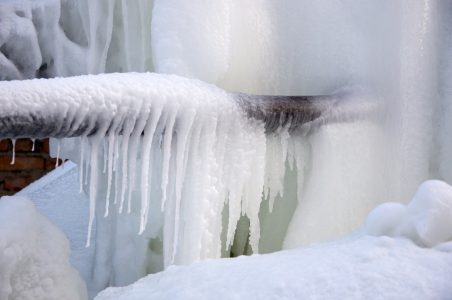Crucial Tips to Avoid Frozen Pipes in Winter: Specialist Guidance
Crucial Tips to Avoid Frozen Pipes in Winter: Specialist Guidance
Blog Article
We've come across the article on How To Avoid Freezing Pipes directly below on the web and concluded it made good sense to talk about it with you here.

Cold weather can damage your pipes, particularly by freezing pipes. Right here's how to stop it from occurring and what to do if it does.
Intro
As temperature levels drop, the danger of frozen pipes boosts, possibly bring about pricey repair work and water damages. Recognizing how to prevent icy pipes is vital for property owners in cold climates.
Comprehending Icy Pipelines
What creates pipes to freeze?
Pipes freeze when exposed to temperature levels below 32 ° F (0 ° C) for extended durations. As water inside the pipelines ices up, it broadens, putting pressure on the pipeline wall surfaces and potentially causing them to rupture.
Dangers and problems
Frozen pipelines can result in water disturbances, home damages, and pricey repair work. Ruptured pipes can flooding homes and trigger substantial architectural damages.
Indications of Frozen Pipes
Determining icy pipelines early can avoid them from rupturing.
Just how to recognize icy pipes
Look for decreased water flow from faucets, unusual smells or noises from pipes, and visible frost on subjected pipelines.
Prevention Tips
Protecting at risk pipes
Wrap pipelines in insulation sleeves or make use of heat tape to safeguard them from freezing temperature levels. Focus on pipelines in unheated or exterior locations of the home.
Heating techniques
Maintain indoor areas appropriately heated up, particularly locations with pipes. Open closet doors to permit cozy air to circulate around pipelines under sinks.
Shielding Exterior Plumbing
Garden pipes and exterior faucets
Detach and drain pipes yard tubes before winter. Install frost-proof faucets or cover exterior taps with shielded caps.
What to Do If Your Pipes Freeze
Immediate actions to take
If you suspect frozen pipes, maintain taps available to ease pressure as the ice thaws. Utilize a hairdryer or towels soaked in warm water to thaw pipes slowly.
Long-Term Solutions
Structural changes
Take into consideration rerouting pipes far from outside wall surfaces or unheated locations. Include added insulation to attic rooms, basements, and crawl spaces.
Updating insulation
Buy top notch insulation for pipes, attics, and wall surfaces. Appropriate insulation assists maintain regular temperature levels and lowers the danger of frozen pipelines.
Final thought
Stopping frozen pipes needs positive steps and quick responses. By comprehending the reasons, indicators, and preventive measures, homeowners can safeguard their pipes throughout winter.
5 Ways to Prevent Frozen Pipes
Drain Outdoor Faucets and Disconnect Hoses
First, close the shut-off valve that controls the flow of water in the pipe to your outdoor faucet. Then, head outside to disconnect and drain your hose and open the outdoor faucet to allow the water to completely drain out of the line. Turn off the faucet when done. Finally, head back to the shut-off valve and drain the remaining water inside the pipe into a bucket or container. Additionally, if you have a home irrigation system, you should consider hiring an expert to clear the system of water each year.
Insulate Pipes
One of the best and most cost-effective methods for preventing frozen water pipes is to wrap your pipes with insulation. This is especially important for areas in your home that aren’t exposed to heat, such as an attic. We suggest using foam sleeves, which can typically be found at your local hardware store.
Keep Heat Running at 65
Your pipes are located inside your walls, and the temperature there is much colder than the rest of the house. To prevent your pipes from freezing, The Insurance Information Institute suggests that you keep your home heated to at least 65 degrees, even when traveling. You may want to invest in smart devices that can keep an eye on the temperature in your home while you’re away.
Leave Water Dripping
Moving water — even a small trickle — can prevent ice from forming inside your pipes. When freezing temps are imminent, start a drip of water from all faucets that serve exposed pipes. Leaving a few faucets running will also help relieve pressure inside the pipes and help prevent a rupture if the water inside freezes.
Open Cupboard Doors
Warm your kitchen and bathroom pipes by opening cupboards and vanities. You should also leave your interior doors ajar to help warm air circulate evenly throughout your home.

I recently found that blog post about 6 Ways to Prevent Frozen Pipes when surfing the search engines. Those who enjoyed our blog post kindly don't forget to share it. Bless you for being here. Revisit us soon.
Call Today Report this page